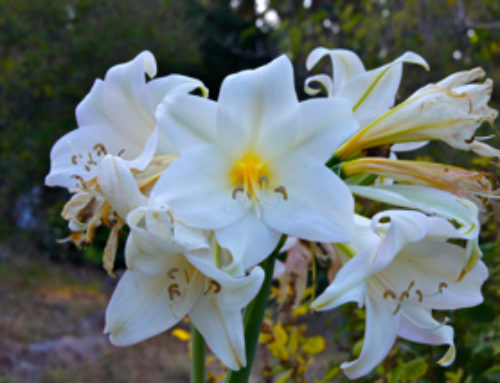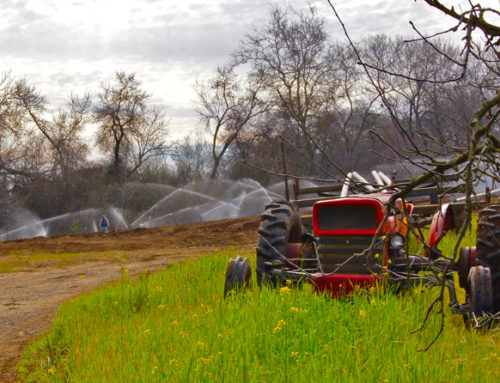Many of the vegetable varieties that grow well here on the farm during the winter season belong to the Mustard family. Although each variety will vary in appearance, you can always tell from their cross-shaped flowers that they are related, hence another common family name they are known by is Crucifers or Brassicas. The more popular Crucifers we grow are Broccoli, Cabbage, Kale, Collards, Radishes, Bok Choi, Napa Cabbage, Arugula, Turnips, Asian Greens such as Mizuna and Tatsoi, and right now the most abundant, Brussels sprouts (Brassica Oleracea gemmifera) – one of my favorite. Like their cousins, they have adapted to subfreezing temperatures by converting starch into sugars, allowing them to lower the freezing point of their sap, preventing the cells from rupturing and damaging the plants tissue. So with the frosty temperatures we had a couple of weeks ago, the Brussels sprouts have a distinct and subtle sweetness. If you grew up eating and hating Brussels sprouts that were picked too mature and boiled too long, give them another chance.

Brussels sprouts might look comical and unusual with their long stems covered in tiny mature cabbages but they take time, planning, patience, and commitment to grow. Even before we get to pick our first summer crop, we have to start planning where our brussels sprouts will grow and overwinter. They are started from seed in the greenhouse in late May, transplanted in July in hopes that we get to harvest them before Thanksgiving or at least by early December. From seed to first harvest, it can take over 150 days. Last year we got a late start, the early varieties were out of stock and the seedlings got transplanted in late July, therefore our harvest only got started towards the end of December.

Sprouts were believed to have been cultivated in Italy in Roman times, and possibly as early as the 1200s in Belgium. The modern Brussels sprout that we are familiar with was first cultivated in large quantities in Belgium (hence the name “Brussels” sprouts) as early as 1587, with their introduction into the U.S. in the 1800s. They were grown in California in the early 1900s, with the first central coast plantings in the 1920s. Production peaked in the 1960‘s, and today approximately 3000 acres in California are still in Brussels sprout production. This acreage supplies the majority of the U.S. production from June through January, with nearly all of the acreage located in the central coast region, in San Mateo, Santa Cruz, and Monterey counties.






